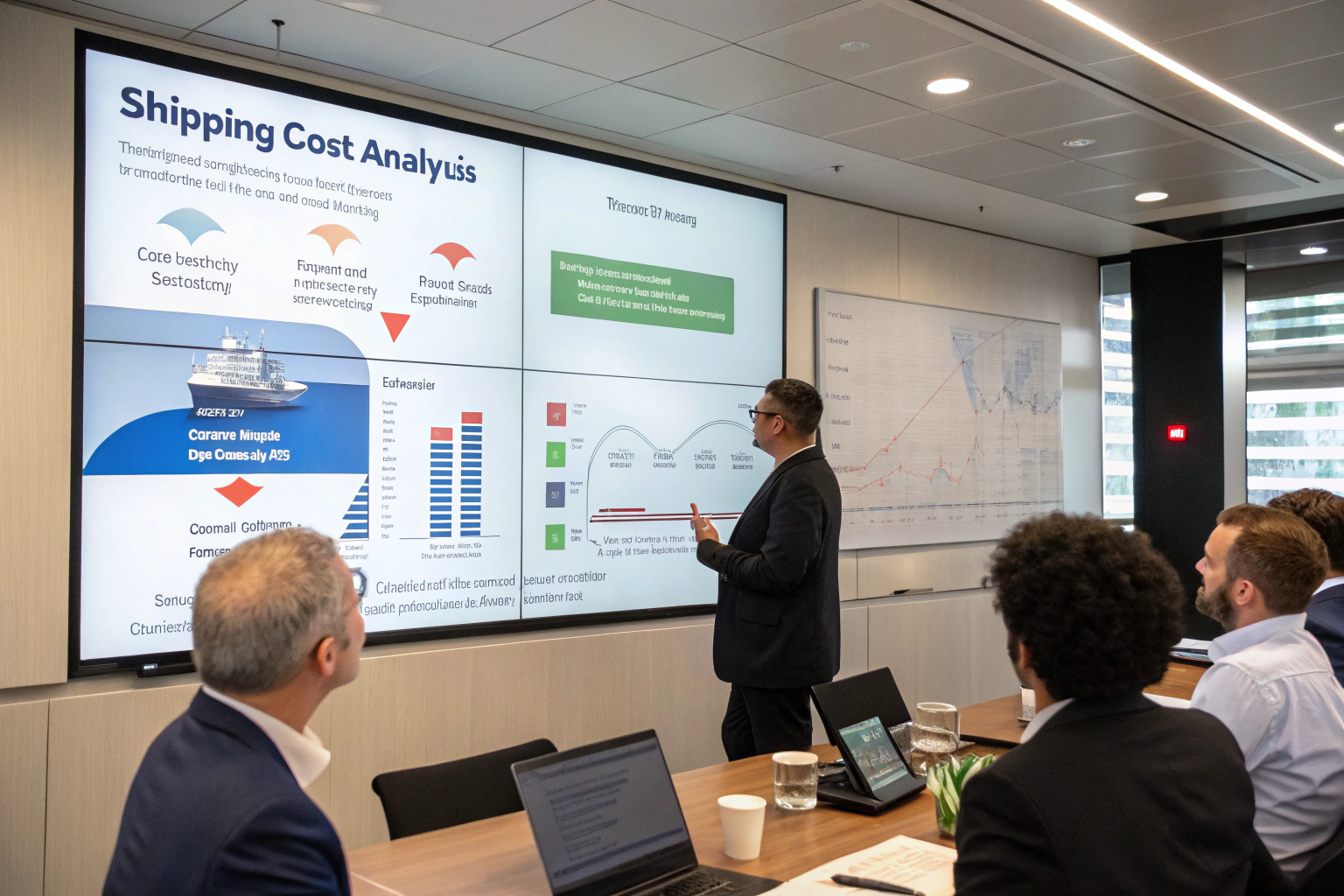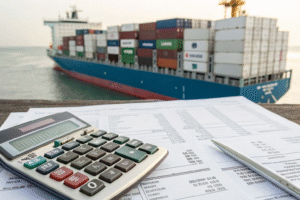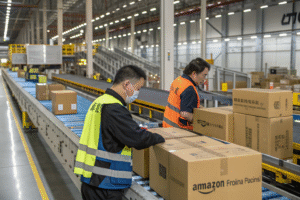The global shipping industry's transition toward sustainability represents one of the most significant transformations in modern logistics. As environmental regulations tighten and consumer preferences shift, businesses face both cost pressures and opportunities in green shipping initiatives. Understanding how sustainability will impact your freight costs is essential for accurate budgeting and strategic planning.
Sustainable shipping will initially increase your freight costs by 15-30% through green fuel surcharges, carbon taxes, and compliance investments, but will eventually create efficiencies that may reduce total costs by 5-15% through optimized operations and new technologies. The cost impact varies significantly by transportation mode, with ocean freight facing the most immediate increases while air freight experiences more gradual changes.
Let's examine the specific cost components, timeline expectations, and strategic approaches to manage the financial impact of shipping's sustainability transformation.
What are the immediate cost impacts of green regulations?
New environmental regulations are introducing direct cost increases across all transportation modes, with compliance requirements creating both operational changes and financial obligations. These impacts are already appearing in freight invoices and contracts.
The International Maritime Organization's Carbon Intensity Indicator (CII) requirements are forcing vessel speed reductions and operational changes that decrease effective capacity. The EU Emissions Trading System (ETS) now includes shipping, adding carbon costs for voyages to and from European ports. The FuelEU Maritime initiative mandates progressive reductions in greenhouse gas intensity. Meanwhile, airline emissions regulations and sustainable aviation fuel requirements are increasing air freight costs. These regulatory measures typically add 8-20% to current freight rates, with variations based on trade lane, vessel efficiency, and carrier compliance strategies.

How are carbon pricing mechanisms affecting costs?
Carbon cost implementation:
- EU ETS charges adding $5-25 per ton of CO2 for Europe-bound shipments
- National carbon taxes in multiple countries adding similar surcharges
- Emissions reporting costs for compliance documentation and verification
- Trading scheme administration fees passed through to shippers
- Carbon offset purchases for carriers aiming for carbon-neutral operations
These costs are typically itemized as separate surcharges on freight invoices.
What efficiency mandates increase operational costs?
Efficiency-driven cost increases:
- Vessel speed reduction decreasing annual transport capacity by 10-20%
- Energy Efficiency Existing Ship Index (EEXI) compliance requiring engine power limitations
- Ship Energy Efficiency Management Plan (SEEMP) implementation costs
- Fleet renewal acceleration pushing newer, more expensive vessels into service
- Operational optimization investments in weather routing and performance monitoring
These factors collectively reduce available capacity while increasing operational expenses.
How will green fuel transitions impact pricing?
The shift from traditional fossil fuels to sustainable alternatives represents the most significant cost factor in shipping's sustainability transformation. Green fuels currently carry substantial price premiums that directly impact freight rates.
Sustainable marine fuels like green methanol and biofuels cost 2-3 times more than conventional heavy fuel oil. Sustainable aviation fuel carries a 2-4 times premium over conventional jet fuel. These cost differences translate directly into fuel surcharges, with early adopters passing through the full premium while more gradual transitions spread costs across broader customer bases. Additionally, dual-fuel vessel investments and bunkering infrastructure development create capital costs that carriers recover through rate increases. The fuel transition typically adds 15-40% to fuel cost components, which represent 25-50% of total freight costs.
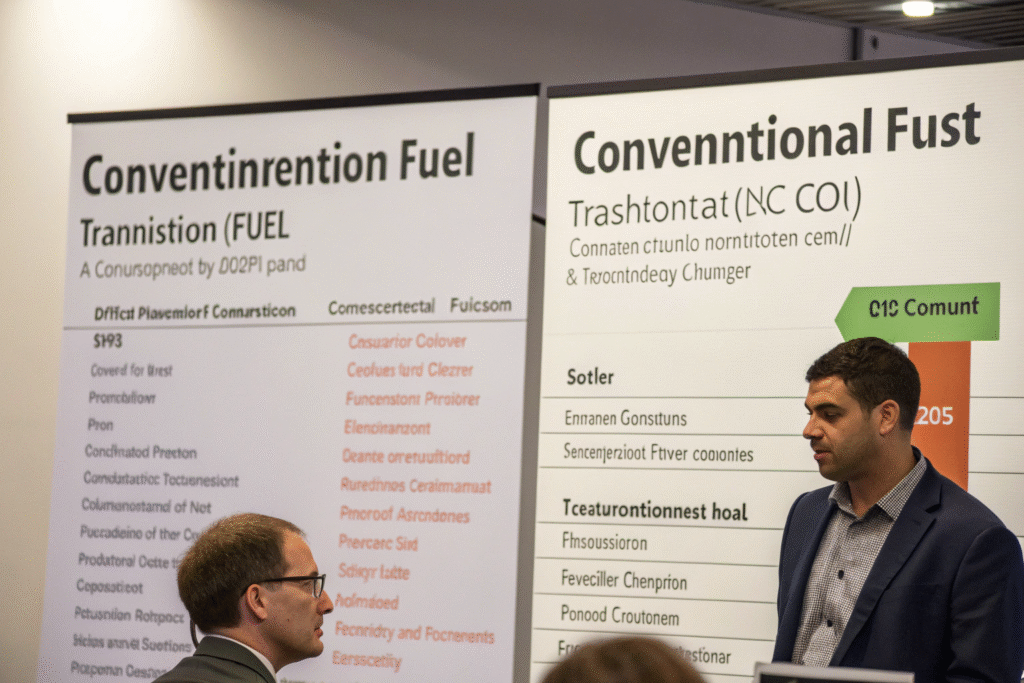
What are the specific green fuel cost premiums?
Current fuel cost comparisons:
- Green methanol costs $1,200-1,800 per ton versus $500-700 for conventional fuel
- Biofuels range from $800-1,400 per ton depending on feedstock and production
- LNG costs $600-900 per ton with lower carbon but methane leakage concerns
- Sustainable aviation fuel costs $1,200-2,000 per ton versus $600-800 for jet fuel
- Ammonia and hydrogen remain experimental with costs 3-5 times conventional fuels
These premiums directly impact the fuel component of your freight costs.
How are carriers managing the fuel cost transition?
Carrier fuel strategies:
- Bunker Adjustment Factor (BAF) surcharges specifically for green fuel premiums
- Dual-fuel vessel investments allowing fuel flexibility but adding capital costs
- Fuel blending approaches gradually increasing sustainable fuel percentages
- Green corridor focus concentrating sustainable operations on specific routes
- Customer partnership programs sharing transition costs with committed shippers
Understanding carrier approaches helps anticipate your specific cost impacts.
What efficiency technologies might eventually reduce costs?
While sustainability initiatives initially increase costs, numerous technologies and operational improvements promise long-term efficiency gains that could partially offset green premiums. These innovations represent the potential upside of the sustainability transition.
Advanced voyage optimization systems using AI and real-time data can reduce fuel consumption by 10-20%. Air lubrication systems decreasing vessel water resistance can achieve 5-10% fuel savings. Wind-assisted propulsion technologies like rotor sails and wingsails offer 5-15% fuel reduction. Slow steaming practices, while reducing capacity, can decrease fuel consumption by 25-40% at slightly reduced speeds. These efficiency technologies typically require 2-5 year payback periods but eventually create net cost savings.

Which efficiency technologies offer the best ROI?
High-return efficiency investments:
- Voyage optimization software with 6-18 month payback periods
- Hull cleaning and coating systems reducing resistance with 1-2 year paybacks
- Engine performance monitoring achieving 3-8% savings with minimal investment
- Waste heat recovery systems capturing otherwise lost energy
- LED lighting and energy management reducing hotel loads on vessels
These technologies typically deliver 10-25% returns on investment.
How can operational changes reduce environmental costs?
Operational efficiency strategies:
- Slow steaming reducing fuel consumption significantly at slightly longer transit times
- Weather routing optimization avoiding conditions that increase fuel burn
- Port call optimization reducing waiting times and associated emissions
- Intermodal optimization balancing speed and emissions across transportation modes
- Consolidation improvements increasing load factors and reducing per-unit emissions
Operational changes often deliver immediate benefits without capital investment.
How will sustainability requirements vary by transportation mode?
The cost impact of sustainable shipping differs significantly across ocean, air, and land transportation due to varying regulatory timelines, technology availability, and industry structures. Understanding these modal differences helps allocate sustainability budgets effectively.
Ocean shipping faces the most immediate and substantial cost increases due to IMO regulations and the scale of fuel transition required. Air freight experiences gradual cost increases focused on sustainable aviation fuel blending mandates. Trucking and rail see more regional variation with electric vehicle transitions progressing at different paces. These modal differences mean businesses using multiple transportation types will face a complex landscape of sustainability costs requiring tailored management approaches for each mode.
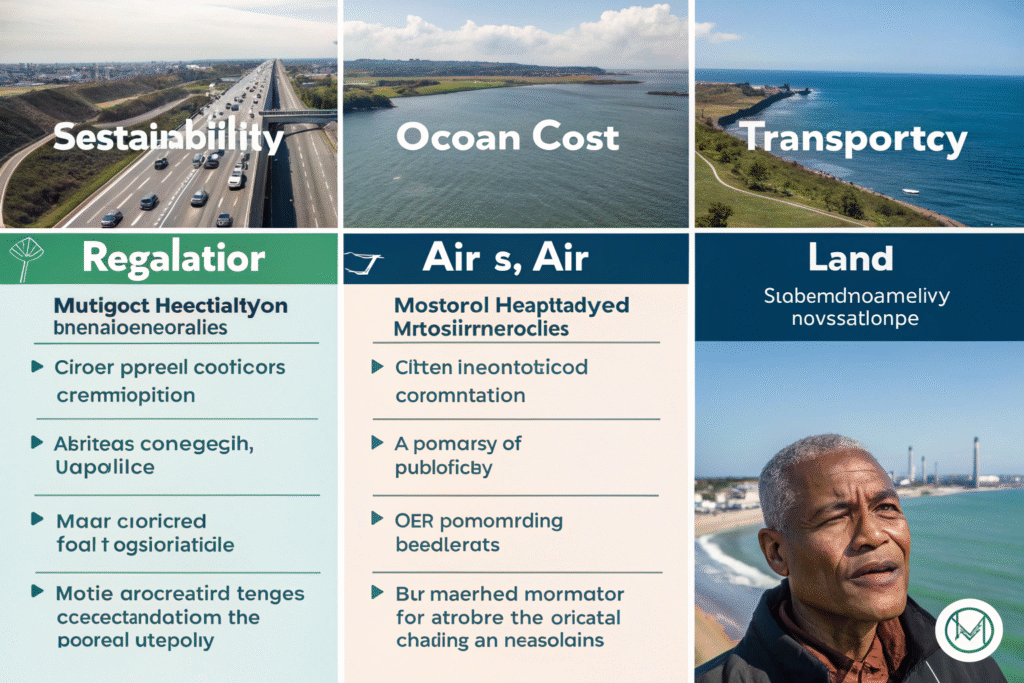
What are the ocean shipping sustainability cost drivers?
Ocean freight cost factors:
- IMO CII regulations requiring operational changes that reduce effective capacity
- EU ETS inclusion adding carbon costs for European trades
- Green fuel transition with substantial price premiums for sustainable alternatives
- Energy Efficiency Design Index (EEDI) pushing new vessel investments
- Ballast water management and other environmental system requirements
Ocean shipping faces the most comprehensive regulatory pressure.
How is air freight sustainability evolving differently?
Air cargo sustainability approach:
- Sustainable aviation fuel mandates starting with blending requirements
- CORSIA offset requirements for international flights
- Aircraft efficiency improvements through fleet modernization
- Operational optimization including air traffic management improvements
- Electric and hydrogen aircraft development for shorter-term potential
Air freight's sustainability transition progresses more gradually than ocean shipping.
What strategies can mitigate sustainability cost impacts?
While sustainability cost increases are inevitable, numerous strategies can help businesses manage the financial impact while positioning themselves for long-term advantage in a greener shipping landscape.
Contract structures with sustainability cost sharing clauses provide predictability. Modal optimization balances cost and sustainability across transportation options. Supply chain redesign reduces transportation distances and requirements. Carrier selection prioritizes partners with efficient operations and realistic sustainability strategies. Cargo consolidation improves load factors and reduces per-unit emissions. These approaches collectively can reduce the net cost impact of sustainability measures by 30-50%.
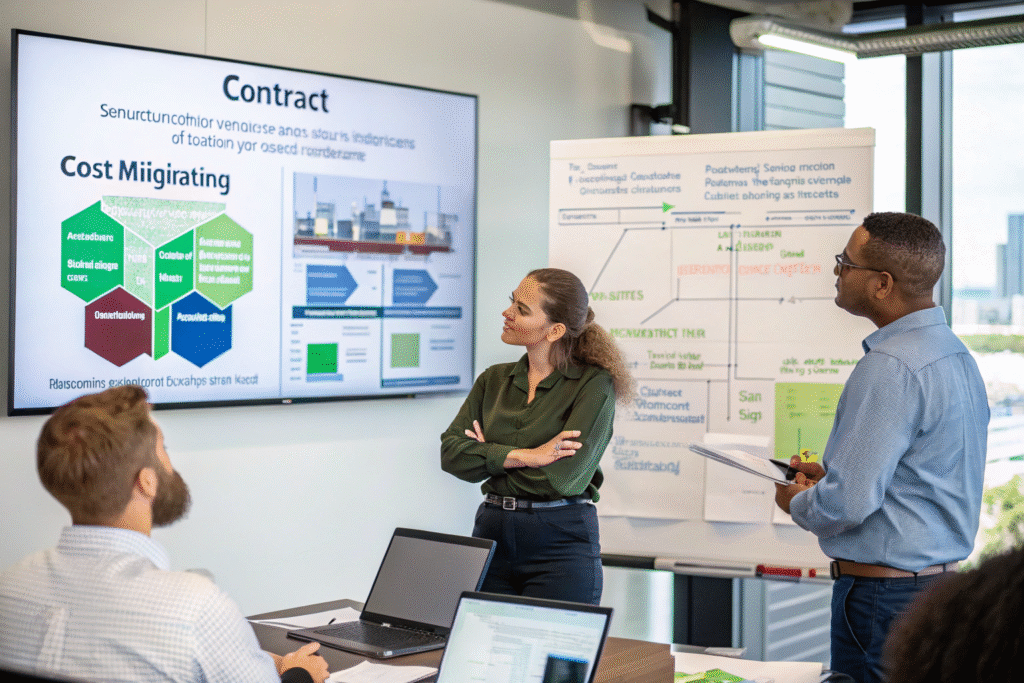
How can contract structures address sustainability costs?
Effective contract approaches:
- Sustainability surcharge caps limiting exposure to extreme cost increases
- Cost sharing mechanisms splitting green premiums with carriers
- Efficiency incentives rewarding carriers for exceeding environmental targets
- Multi-year agreements providing cost predictability during transition
- Benchmarking clauses ensuring sustainability costs remain competitive
Strategic contracting transforms sustainability from unpredictable cost to managed expense.
What operational changes reduce environmental cost impact?
Operational mitigation strategies:
- Consolidation programs improving container utilization and reducing per-unit costs
- Route optimization selecting more efficient paths despite slightly longer distances
- Inventory strategy adjustments balancing storage costs against transportation emissions
- Packaging optimization reducing weight and volume to decrease transportation emissions
- Supplier location evaluation considering transportation impacts in sourcing decisions
These operational improvements often reduce both costs and environmental impact simultaneously.
Conclusion
Sustainable shipping will initially increase freight costs by 15-30% through regulatory compliance, green fuel premiums, and efficiency investments, but will eventually create opportunities for 5-15% savings through optimized operations and new technologies. The most successful businesses will approach this transition strategically—implementing cost mitigation measures, selecting carriers with realistic sustainability pathways, optimizing their supply chains for both cost and environmental performance, and building flexibility into their logistics budgeting. Companies that proactively manage their sustainability transition will not only control costs but potentially gain competitive advantage as customers increasingly value environmental performance in their supply chain decisions.
